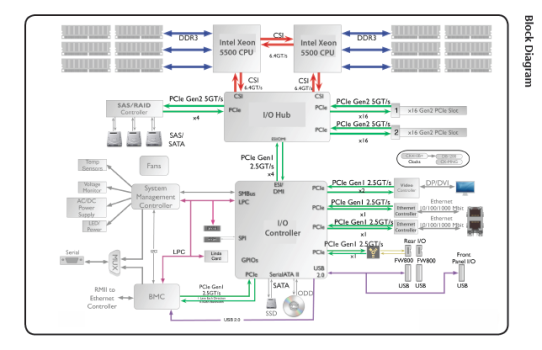HEXADECIMAL DESCRIPTION
--------------------------------------------------------------
0x3F0098 Bootblock from 144.0.0.0.0 - rebuilt Firmware
0x3FFEF0 LBSN_BD sector Build Date YYMMDDYYMMDD: 0903x10903x1 LBSN: J591xxxxxxPHC
0x3FFFEC LBSN sector from Mac Pro 5,1
nvram.vol position: 0x120000, size: 0x30000, header size: 0x48
vss1_position: 00120048: 2456 5353 $VSS
vss2_position: 00130048: ffff ffff ....
Fsys_position: 00148000: 4673 7973 Fsys
Gaid_position: 00148800: 4761 6964 Gaid
0x120048 first stream start position ok, stored in /tmp/VSS_Store1.bin, length: 0x0000ffb8
0x148000 Fsys start position ok, header: 040000 000008
0x148800 Gaid start position ok, header: 040000 000018
scanvss_available: true
Firmware 144.0.0.0.0 (latest) built on Fri Apr 12 12:48:00 2019
Bios Version $IBIOSI: MP51.88Z.F000.B00.1904121248
Bootloader AAPLEFI1.88Z.0005.I00.1904121247 built on Fri Apr 12 12:47:00 2019
Bootblock of 144.0.0.0.0 (rebuilt firmware)
XS31, serial from firmware: YM0xxxxxxx0S
Macserial reported the serial number seems to be possibly valid
XS31 backplane
LBSN: J591xxxxxxPHC BD: 0903x10903x1 Firmware MAC: 00:xx:df:dd:xx:78 LBSN sector of XS31
EnableGop 1.4 EFI module identified
Base_20 hardware descriptor
Fsys | Gaid headers: 040000 000008 | 040000 000018
Fsys: 0 overrides, 1 override-version, 2 ssn, 3 EOF (son, hwc are missing)
fmm-computer-name: nxxxxxxx
MTC count (VSS1, normal): 20
MTC counts (VSS1, deleted) ( 1): 13
MTC counts (VSS1, deleted) ( 2): 14
MTC counts (VSS1, deleted) ( 3): 15
MTC counts (VSS1, deleted) ( 4): 16
MTC counts (VSS1, deleted) ( 5): 17
MTC counts (VSS1, deleted) ( 6): 18
MTC counts (VSS1, deleted) ( 7): 19
CSR policy is 0x77:
0x001 CSR_ALLOW_UNTRUSTED_KEXTS
0x002 CSR_ALLOW_UNRESTRICTED_FS
0x004 CSR_ALLOW_TASK_FOR_PID
0x010 CSR_ALLOW_APPLE_INTERNAL
0x020 CSR_ALLOW_UNRESTRICTED_DTRACE
0x040 CSR_ALLOW_UNRESTRICTED_NVRAM
BootOrder: 1:Boot0080
Boot0080: \System\Library\CoreServices\boot.efi
BootFFFF: \System\Library\CoreServices\boot.efi
8 firmware boots since last garbage collection, MTC counter: 13 - 20
1 (7 deleted) Memory Configs g (ok)
1 (7 deleted) Memory Configs h (ok)
1 (0 deleted) Memory Configs i (ok)
0 Microsoft certificates (ok)
0 (1 deleted) Boot PathProperties0000 (ok)
1 (0 deleted) NVRAM PathProperties0000 (ok)
1 (1 deleted) Boot00xx variables
0 (0 deleted) OCbt00xx variables
1 (0 deleted) csr-active-config (ok)
23989 bytes free space of 65464
VSS1 (Formatted) (Healthy), found 71 variables (20 valid, 51 deleted)
CRC32 checksums: ok
---------------------
all variables in VSS1:
1 (ACPI Variable):AcpiGlobalVariable (Normal)
1 (Apple Boot Variable):csr-active-config (Normal)
1 (Apple Boot Variable):efi-boot-device (Normal)
1 (Apple Boot Variable):efi-boot-device-data (Normal)
1 (Apple Boot Variable):fmm-computer-name (Normal)
1 (Apple Boot Variable):test-id (Normal)
1 (Apple NVRAM Variable):AAPL,PathProperties0000 (Normal)
1 (Apple NVRAM Variable):security-key (Normal)
1 (EFI Global):Boot0080 (Normal)
1 (EFI Global):BootFFFF (Normal)
1 (EFI Global):BootOrder (Normal)
1 (EFI Global):ConOut (Normal)
1 (EFI Global):GFXVENDOR (Normal)
1 (EFI Global):Lang (Normal)
1 (EFI Global):MemoryConfig (Normal)
1 (EFI Global):MemoryConfih (Normal)
1 (EFI Global):MemoryConfii (Normal)
1 (MTC variable):MTC (Normal)
1 (Setup Variable):Setup (Normal)
1 8983fd2d-113c-4e2b-8f47-0abfeb20a41a:SmmS3NvsData (Normal)
---------------------
1 (ACPI Variable):AcpiGlobalVariable (DELETED)
1 (Apple Boot Variable):AAPL,PathProperties0000 (DELETED)
1 (Apple NVRAM Variable):security-key (DELETED)
1 (EFI Global):Boot0080 (DELETED)
1 8983fd2d-113c-4e2b-8f47-0abfeb20a41a:SmmS3NvsData (DELETED)
3 (EFI Global):BootFFFF (DELETED)
6 (EFI Global):BootNext (DELETED)
7 (EFI Global):MemoryConfig (DELETED)
7 (EFI Global):MemoryConfih (DELETED)
7 (MTC variable):MTC (DELETED)
8 (EFI Global):ConOutDev (DELETED)
8 (EFI Global):_AGP_DISABLED (DELETED)
-------------------------------------------------------------------
LBSN sector
-------------------------------------------------------------------
Type: Section
Subtype: Raw
Fixed: No
Base: 3FFEF0h
Header address: FFFFFEF0h
Data address: FFFFFEF4h
Offset: E90h
Type: 19h
Full size: 110h (272)
Header size: 4h (4)
Body size: 10Ch (268)
===================================================================
00000000: 1001 0019 ....
-------------------------------------------------------------------
00000000: 0000 0000 0000 0000 0000 0000 ea00 23df ..............#.
00000010: xxxx xxxx xxxx xxxx xxxx xxxx xxxx 5048 xxx.J5xxxxxxx1PH
00000020: 4320 2020 2020 ffff ffff ffff ffff ffff C ..........
00000030: ffff ffff ffff ffff ffff ffff ffff ffff ................
*
00000050: ffff ffff ffff ffff ffff ffff 3039 3033 ............0903
00000060: xxxx xxxx xxxx xxxx 3718 07d0 0fff ffff 31xxxxxx7.......
00000070: ffff ffff ffff ffff ffff ffff 01ff ffff ................
00000080: ffff ffff ffff ffff ffff ffff 0000 0000 ................
00000090: 0000 0000 0000 0000 0000 0000 0000 0000 ................
*
000000d0: 0000 0000 0000 0000 0000 0000 bf50 41eb .............PA.
000000e0: 1d00 0000 0000 0000 0000 0000 ffff ffff ................
000000f0: ffff ffff ffff ffff e802 ffff 0f09 e9fb ................
00000100: f200 0000 7856 3412 0000 ffff ....xV4.....
#-xJ59xxxxxx1PHC 090xxxxxxx3317PAxV4
===================================================================
Firmware volumes CRC32 count: 9
Firmware volumes CRC32 checksums match
Bootblock vector and checksum was updated
Bootblock CRC32 is valid
Fsys checksum is correct in YM0xxxxxxx0S 144 xs enablegop.bin
Gaid checksum is correct in YM0xxxxxxx0S 144 xs enablegop.bin


















